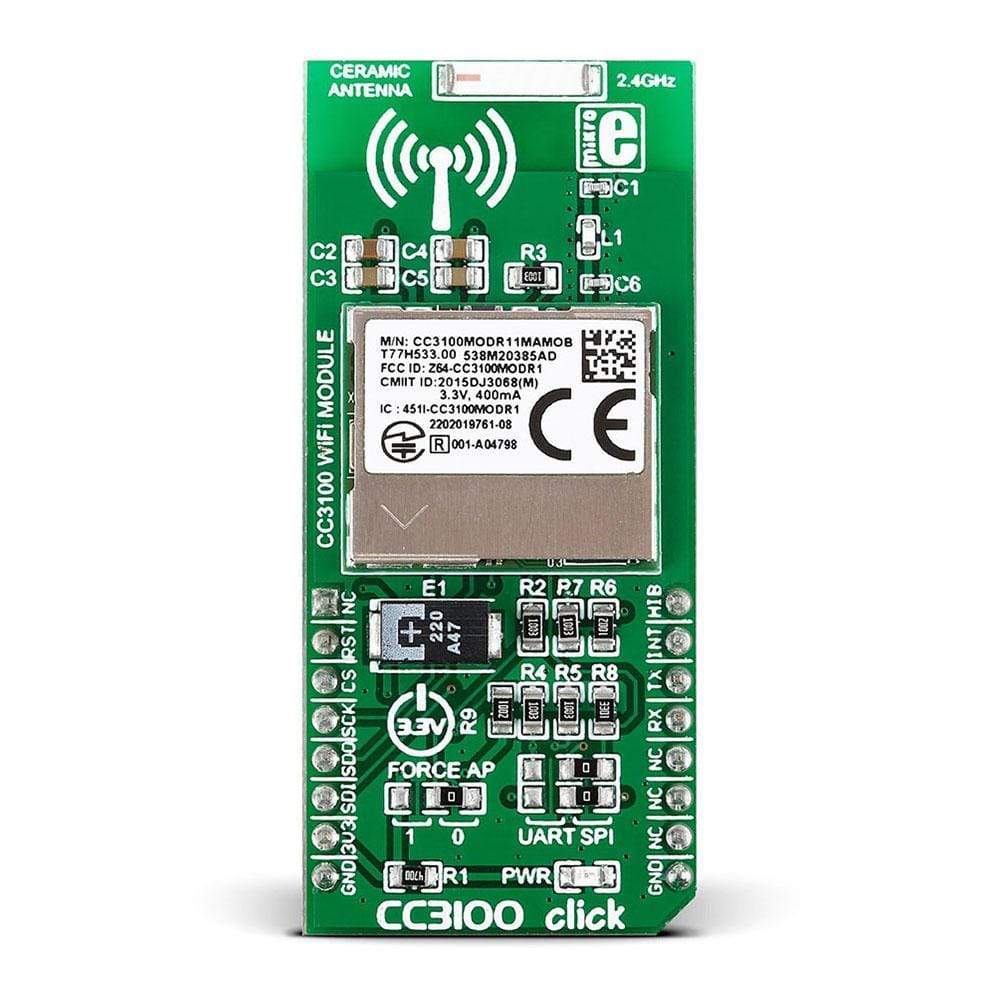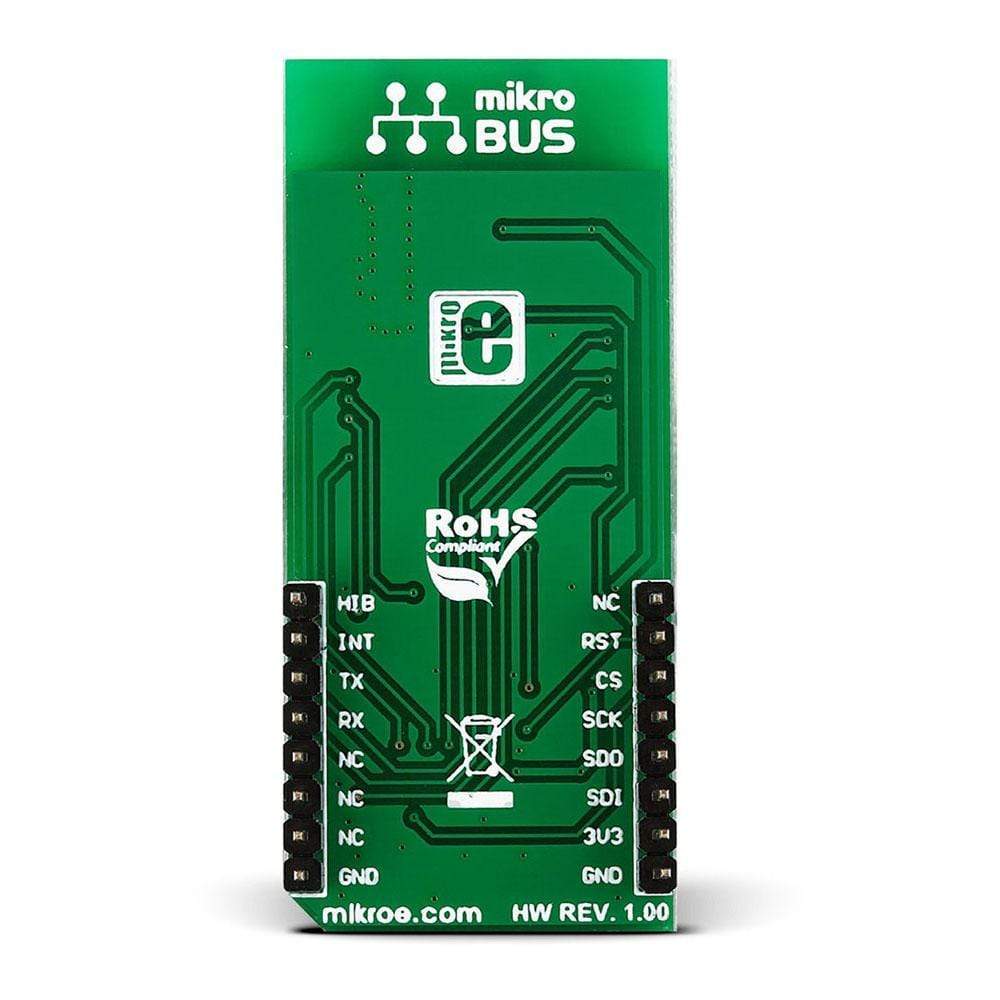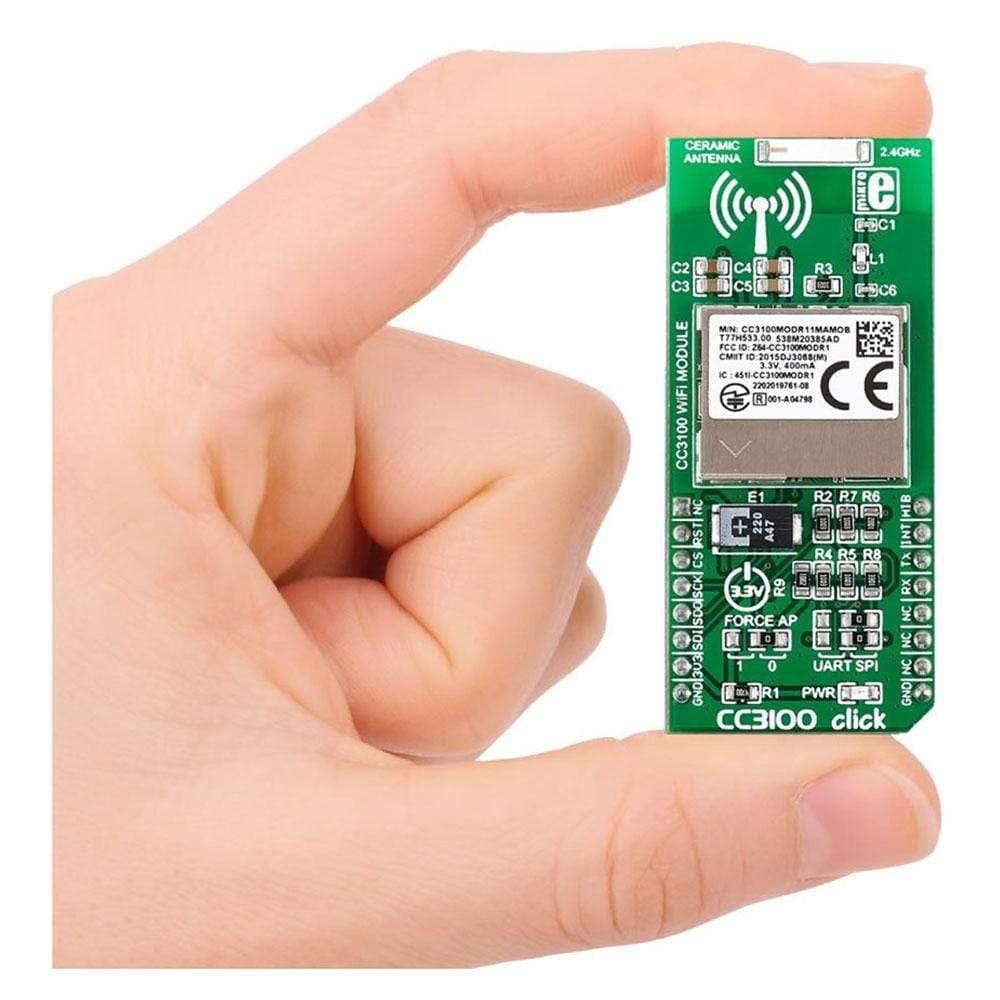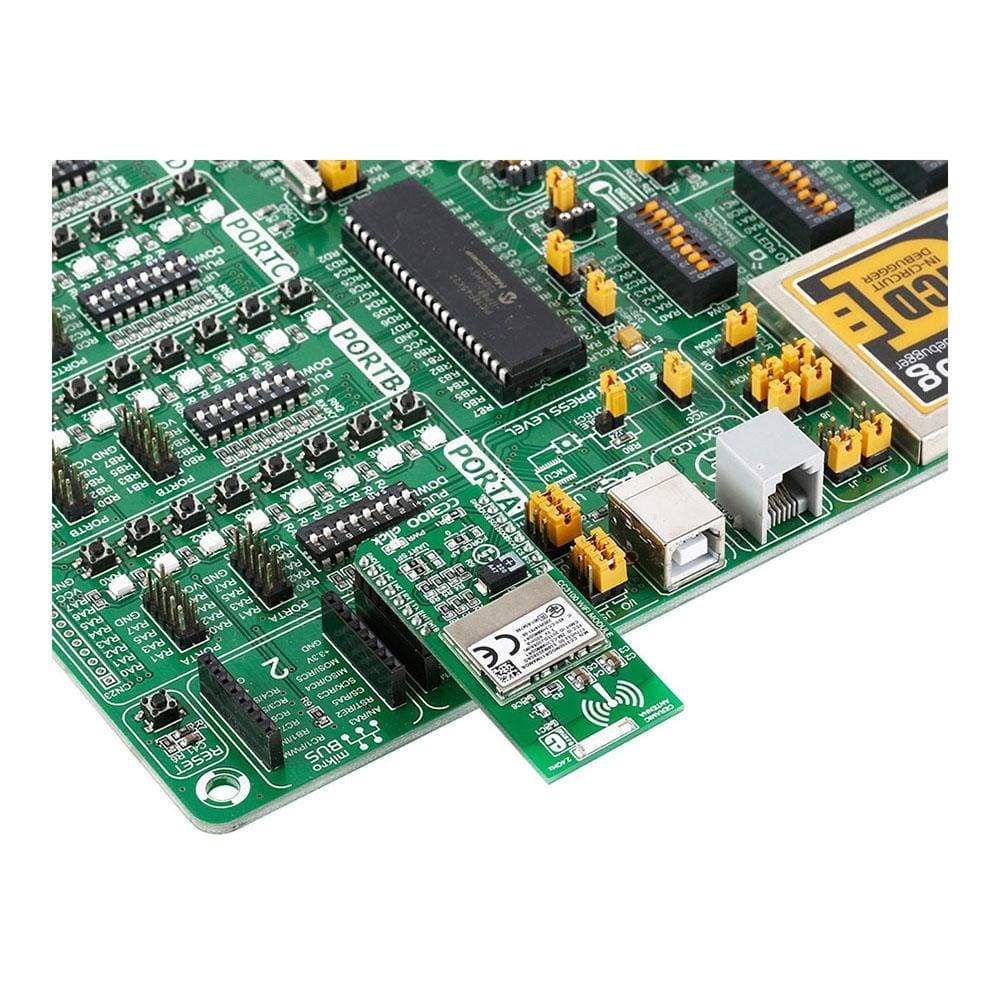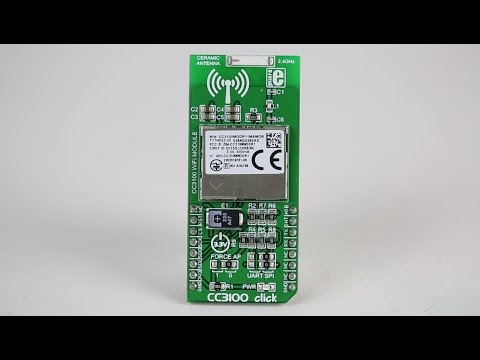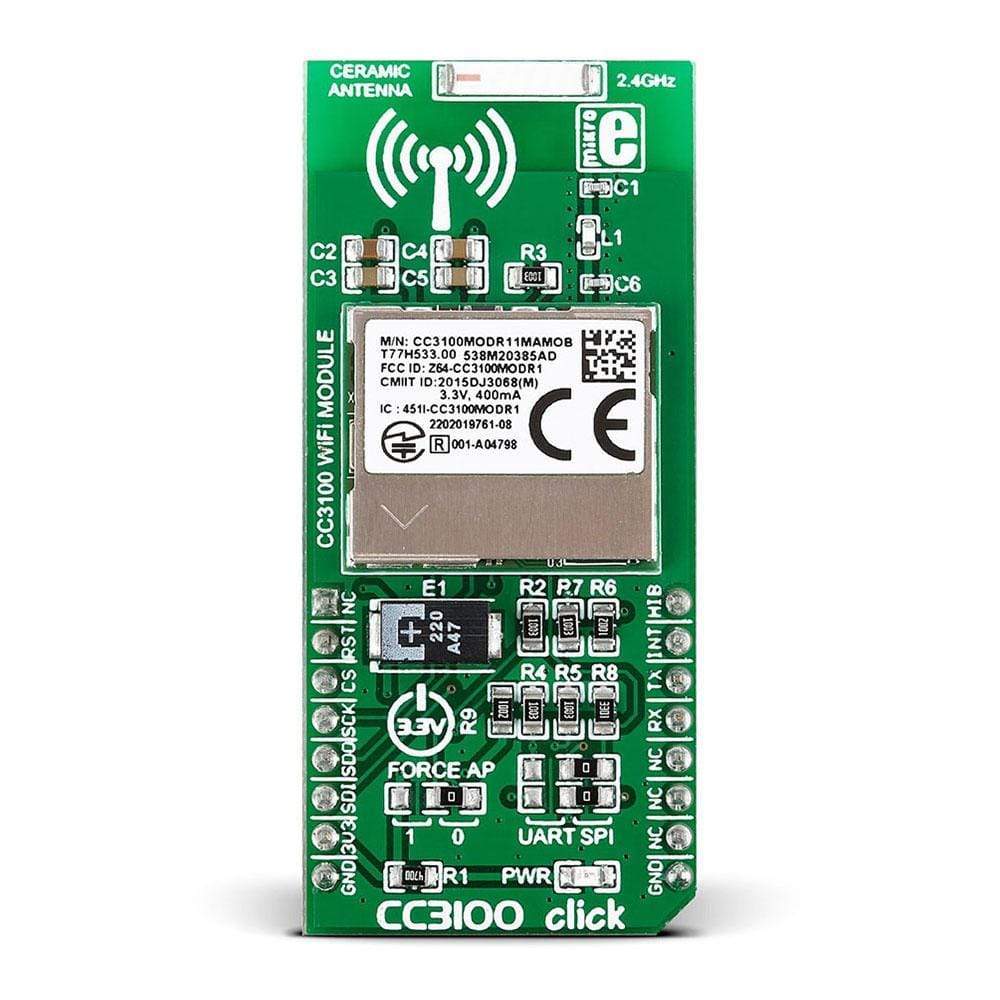
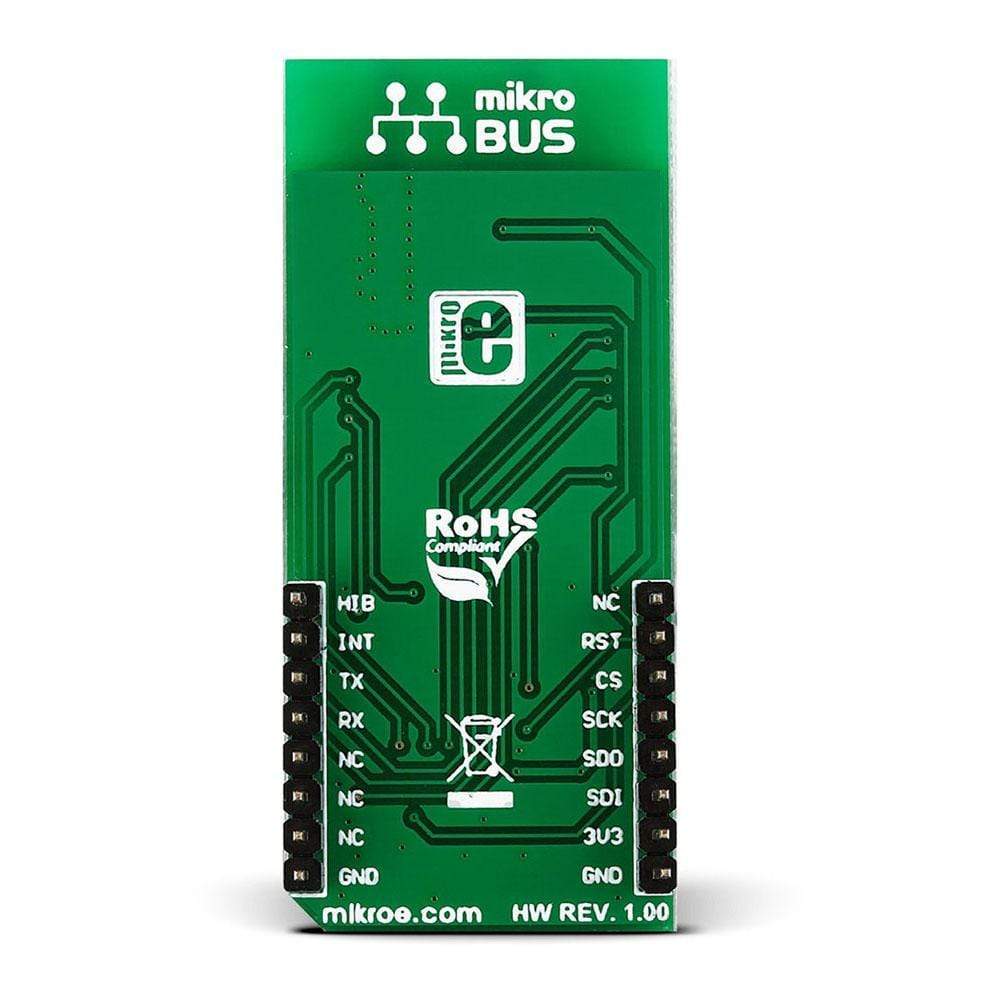
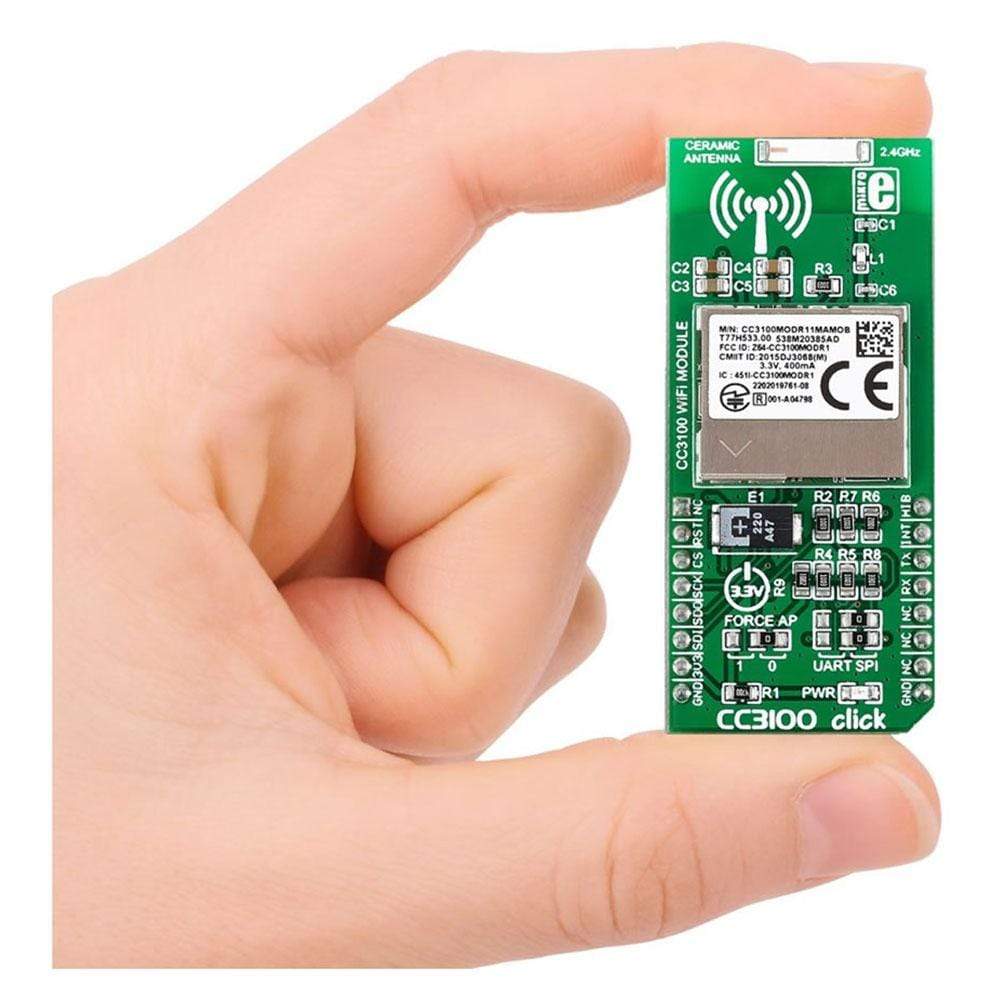
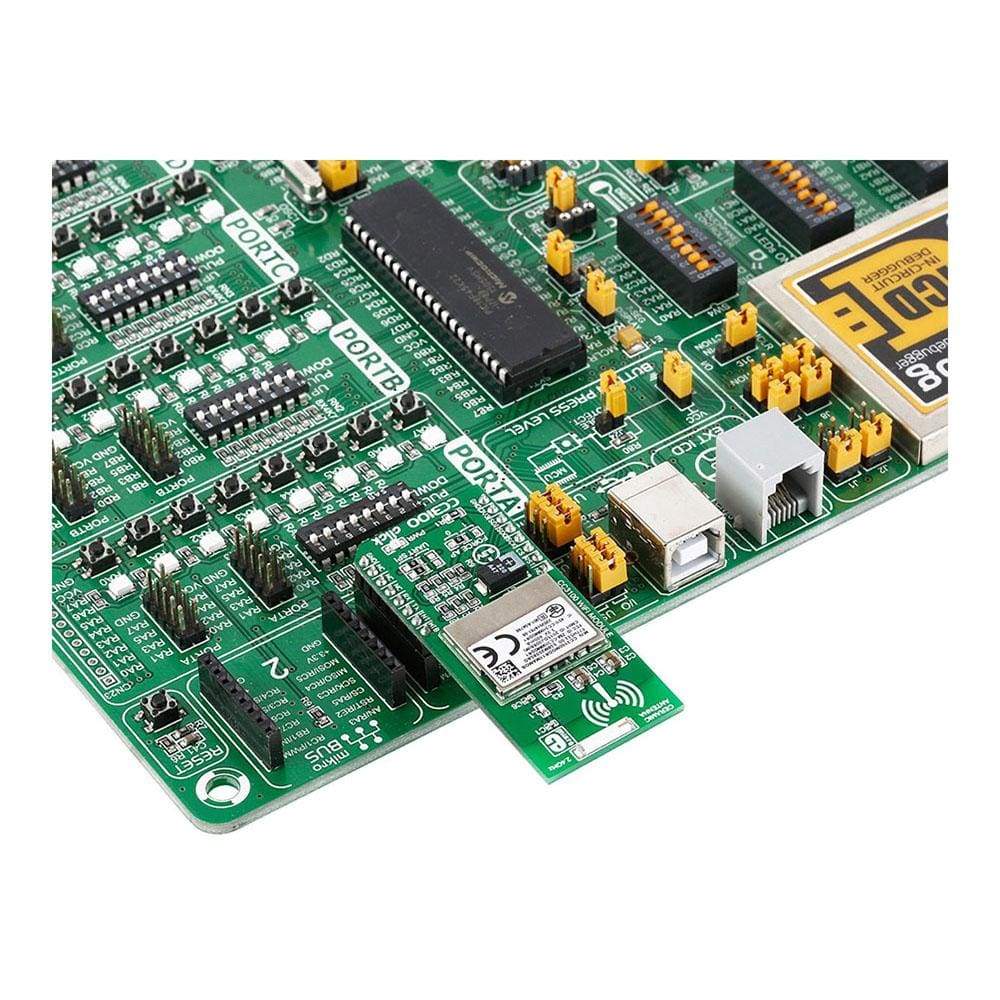
Overview
If you are building an IoT device that connects to the internet through WiFi, your two biggest concerns are power consumption and security' both major strengths of the module on-board the CC3100 Click Board™.
Downloads
Wenn Sie ein IoT-Gerät bauen, das über WLAN eine Verbindung zum Internet herstellt, sind Stromverbrauch und Sicherheit Ihre größten Sorgen – beides große Stärken des Moduls an Bord des CC3100 Click Board™ .
| General Information | |
|---|---|
Part Number (SKU) |
MIKROE-2336
|
Manufacturer |
|
| Physical and Mechanical | |
Weight |
0.023 kg
|
| Other | |
Country of Origin |
|
HS Code Customs Tariff code
|
|
EAN |
8606015079134
|
Warranty |
|
Frequently Asked Questions
Have a Question?
Be the first to ask a question about this.

